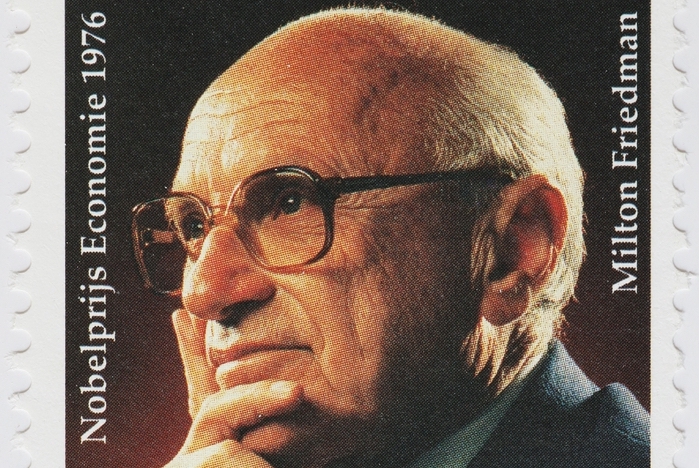ImpactAlpha, Mar. 30 – It’s long been something of a truism among impact investors that it’s not possible to demonstrate true impact with investments in public equities listed on global stock markets.
Sure, many public-equities investors now consider social and environmental factors, some to mitigate risks, others to align with their values. Some shareholders and asset managers “engage” management around climate, human rights and other issues.
Few have taken on the more complex challenge of driving actual, positive impact through listed equity strategies. It’s a worthy task: the total market capitalization of companies listed on stock exchanges worldwide exceeds $100 trillion.
The Global Impact Investing Network has introduced new guidance for impact in listed equities that attempts to raise the bar, and clarify how impact strategies in listed equities differ from ESG approaches and other sustainability-related strategies.
“An ‘impact’ category of funds should be something differentiated from other things that have gone before,” says the GIIN’s Sean Gilbert. Few, if any, listed equity strategies meet the full set of criteria laid out in the new guidance from the GIIN’s listed equities working group, which was shared exclusively with ImpactAlpha.
A key differentiator for an impact strategy, according to the report, is a theory of change, the cause-and-effect the investor believes will contribute to targeted social or environmental objectives. The guidance provides baseline practices, including intentional engagement strategies and performance measurement.
ESG funds, for example, might include explicit risk-management objectives. Impact funds would go further, identifying intentional positive outcomes they seek to achieve.
Traditional shareholder engagement strategies cover a broad range of issues and are often inspired by outside reference points, such as international norms. For impact funds, the engagement strategy should tie back to the theory of change.
And the success of traditional investor-led engagements is often measured by the adoption of a proposal or action. Impact funds must seek to monitor progress in relation to the specific impact objective, according to the GIIN.
“What goes into the portfolio should relate back to the strategy,” says Gilbert. “There needs to be a systematic way to evaluate the companies in relation to what you’ve done.”
Alpha generation
The GIIN’s guidance comes as political attacks on ESG and “woke” capitalism escalate in the U.S. Some Republican-led states have moved to ban firms that consider social and environmental risks in their investments.
At the same time, regulators in the U.S., Europe and other markets are weighing proposals that would require investment firms and advisors to better label and disclose details on ESG and impact fund strategies.
Only about one-fifth of global impact assets under management are in public equities. But listed equities are one of the fastest growing areas of impact investing, according to recent GIIN investor surveys. The guidance draws on the practices, and ambitions, of over 100 asset owners and managers. An earlier GIIN report cataloged emerging strategies for impact in public equities.
“The guidance challenges asset managers, in particular, but really all of us as participants in this market, to really think through the theory of change that takes you from the asset owner’s capital to the outcomes we’re all trying to work towards,” says Jeff Finkelman of Fiduciary Trust, an advisor to family offices and other asset owners.
Fiduciary Trust sees growing demand for impact strategies, Finkelman says. But confusion over ESG and greenwashing has dampened enthusiasm. “A lot of clients don’t really know where to start.”
A focus on theory of change, he says, can connect impact to alpha generation. One female-led manager in his portfolio invests in companies in the small to mid-cap space. By helping a sustainable packaging company better collect and report on the sustainability of their solution, for example, the company has improved efficiencies and reduced water and energy usage, key drivers of stock price appreciation.
Finkelman says the guidance helps clarify what to look for in an impact fund, particularly a more intentional engagement effort. “How a company responds to engagement should ultimately have an influence on the manager’s view of that company and how aligned they are with the manager’s thesis.”
The guidance, he says, “will help us improve our assessment and hold our managers to a higher bar on engagement.”
Impact at scale
Atlas Impact Partners, a long-short hedge fund that generally invests in smaller, pure-play public equities, believes it can help lower the cost of capital for companies it owns and raise the cost of capital for companies it shorts.
“We are increasingly certain that investing in public companies is the most important means of directing capital to innovative solutions for many of the world’s pressing issues,” Atlas said in its most recent impact report. “The scale required to advance the adoption of alternative energy, implement circular economies, and resolve healthcare challenges requires large amounts of capital.”
As for the short positions, the firm says, “We believe that reducing human dependence on unhealthy habits means elevating the cost of capital for companies producing the products and services which create and depend on those habits.”
Asset managers including London-based WHEB Asset Management and Zurich-based Kieger likewise welcome the attention to impact in public markets.
“If we want to have an impact on these issues, we have to have listed equities involved,” says WHEB’s Seb Beloe. “We’re not going to solve climate change without getting all parts of the capital market involved.”
WHEB has engaged companies, for example, to make net zero commitments. More than half of WHEB’s portfolio is now committed to net zero carbon. “Now the question is, are they actually delivering? We’re beginning to see data coming through on that, so we’re making progress.”
With the guidance, WHEB will move to set more explicit impact objectives for each of its portfolio companies and make them public. The practices “are a helpful discipline for us to ensure that we’re having an impact and then communicating that impact to people,” he says.
Listed equities “are companies that are large, systemic, that are driving current sustainability outcomes on the positive or negative side,” says Kieger’s Panagiota Balfousia. “Depending on what your time horizon is for wanting to transition to better sustainability outcomes, you just need to bring those companies with you.”
Part of the impact strategy of Kieger’s healthcare funds is to be a stable, long-term investor to small and mid-cap firms in often volatile markets, providing greater stability for their share price. Long-term holding periods, in turn, allow Kieger to engage young companies to improve data transparency and reporting.
Kieger already is acting on the GIIN’s guidance. The firm has joined the Institutional Investors Group on Climate Change, with an understanding that collective action in public markets is often necessary. The firm is also building out its stewardship approach to better align with the impact objectives of its health strategy.
“We’re more confident that the direction that we’re going is actually aligned with best standards,” says Balfousia. She says Kieger will bring more impact strategies to market and actively align even more with the GIIN’s standards “now that they’re available and public.”












